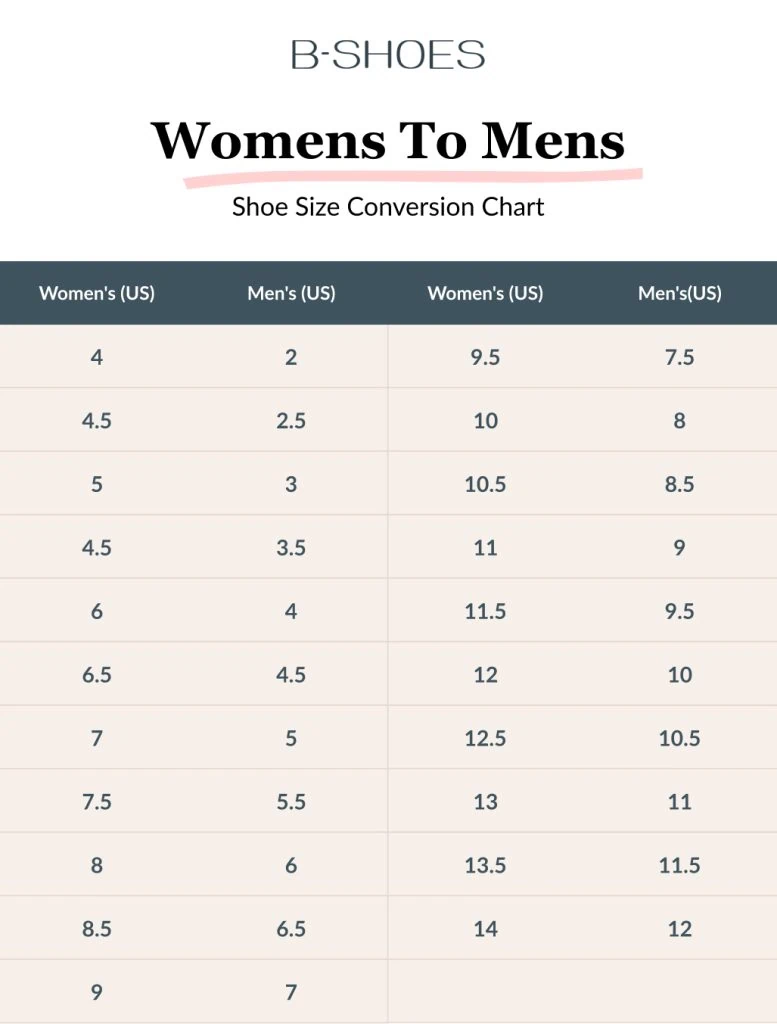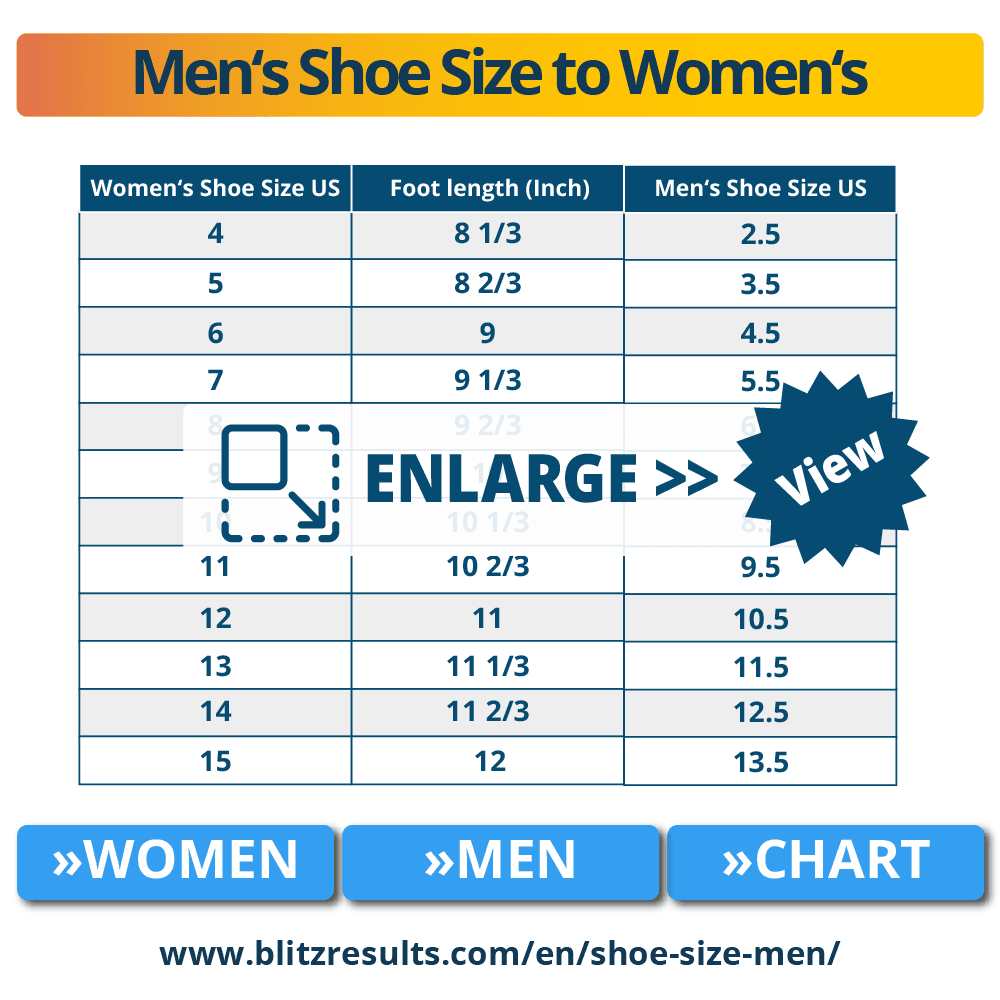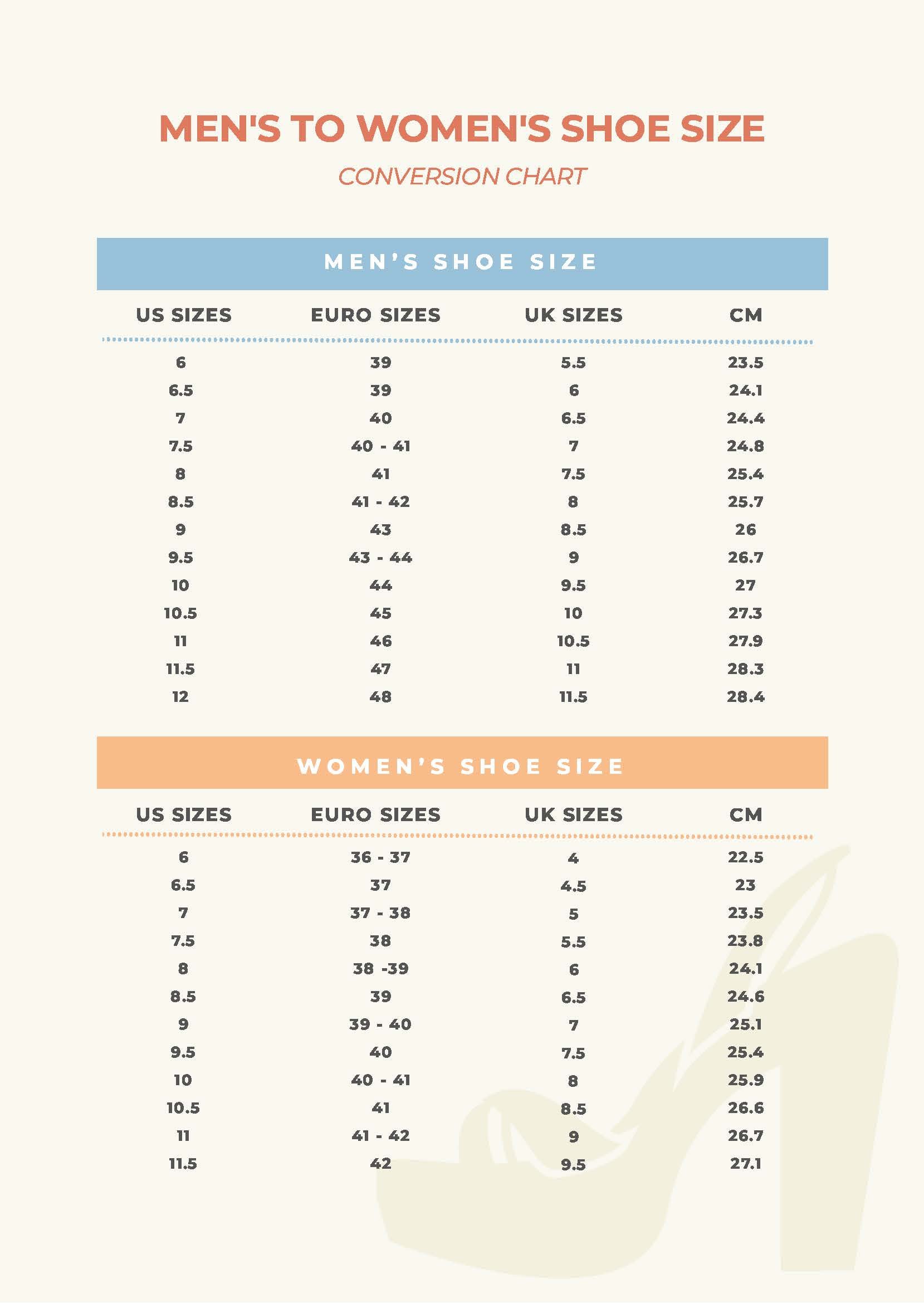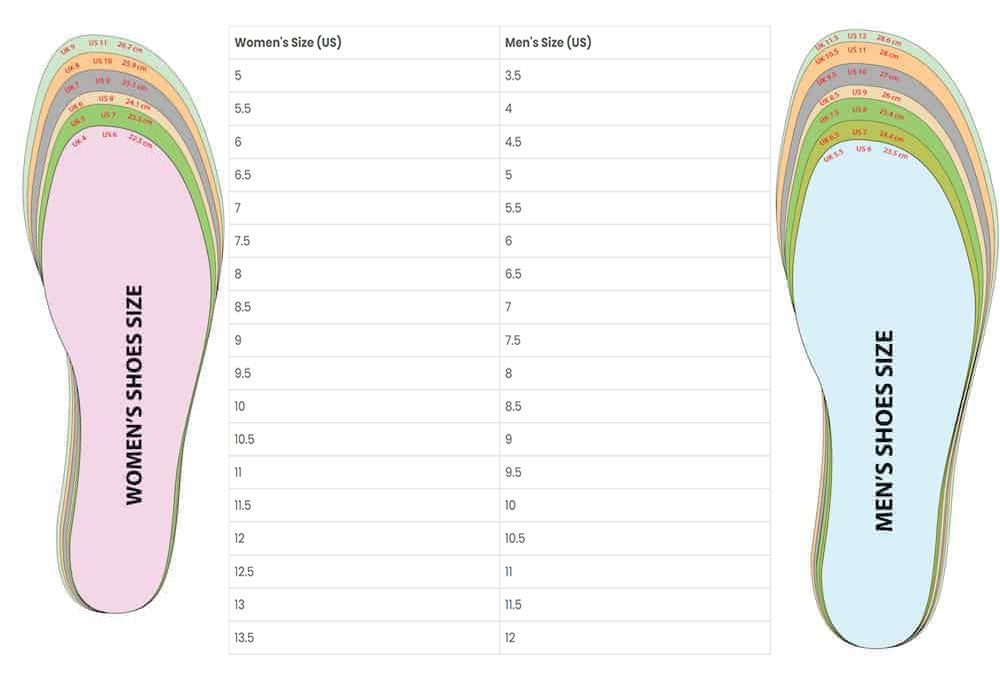Shoe sizing can often feel like a complex puzzle, especially when transitioning from men’s to women’s sizes. Whether you’re shopping for yourself or purchasing a gift, understanding how these sizes convert can save you time and ensure a proper fit. In this guide, we’ll break down the intricacies of men’s to women’s shoe sizes, explore the conversion methods, and offer tips for making informed purchases.
Table of Contents
- Understanding Men’s and Women’s Shoe Sizes
- Men’s to Women’s Shoe Size Conversion Chart
- How to Measure Your Foot Size Accurately
- Factors Affecting Shoe Size: Width and Style
- Pros and Cons of Different Shoe Sizing Methods
- Best Practices for Purchasing Shoes
- FAQs
Understanding Men’s and Women’s Shoe Sizes
Shoe sizes vary significantly between genders, and this can cause confusion. Men’s sizes are typically measured in inches, while women’s sizes are based on a slightly different scale, often leading to a difference of approximately 1.5 sizes. For instance, a men’s size 10 would generally translate to a women’s size 11.5.
The American sizing system is based on the length of the foot, and each size increment represents roughly 1/3 of an inch in length. Understanding these fundamentals can help you make informed decisions when buying footwear.

Why Shoe Size Matters
Comfort is key when it comes to footwear. Wearing the wrong size can lead to various issues such as blisters, calluses, and long-term foot problems. Hence, understanding the sizing nuances between men’s and women’s shoes is essential for health and comfort.
Men’s to Women’s Shoe Size Conversion Chart
| Men’s Size | Women’s Size |
|---|---|
| 6 | 7.5 |
| 7 | 8.5 |
| 8 | 9.5 |
| 9 | 10.5 |
| 10 | 11.5 |
| 11 | 12.5 |
| 12 | 13.5 |

This conversion chart serves as a general guide, but remember that variations exist between brands and styles.
How to Measure Your Foot Size Accurately
Accurate foot measurement is the first step to ensuring you have the correct shoe size. Follow these steps:

Step 1: Gather Your Materials
- Paper
- Pencil
- Ruler or tape measure
Step 2: Trace Your Foot
Place a piece of paper on the floor and stand on it. Trace the outline of your foot. Repeat for the other foot, as sizes can differ.

Step 3: Measure the Length
Using a ruler, measure the longest distance (from your heel to the tip of your longest toe) in inches. Use this measurement to determine your size from the conversion chart.
Step 4: Measure the Width
Measure the widest part of your foot to ascertain the width. This can impact fit, especially in dress and athletic shoes.

Factors Affecting Shoe Size: Width and Style
Several factors beyond length can affect how shoes fit:
Width
Shoe widths range from narrow to extra-wide. It’s crucial to choose a width that provides enough comfort and support.

Shoe Style
Different styles can fit differently even in the same size. For example, high-tops may fit tighter than low-profile shoes, and sandals often accommodate a wider fit.
Pros and Cons of Different Shoe Sizing Methods

2D vs. 3D Foot Scanning
Many retailers now offer 2D and 3D foot scanning technology to provide more accurate sizing.
| Method | Pros | Cons |
|---|---|---|
| 2D Scanning | Cost-effective, quick | May not capture foot volume |
| 3D Scanning | Highly accurate, accounts for volume | More expensive equipment required |

Best Practices for Purchasing Shoes
To ensure a successful shoe purchase:
- Try on shoes later in the day when your feet are more swollen.
- Wear the type of socks you plan to use with the shoes.
- Walk around the store to assess comfort and fit.
FAQs
What is the difference between men’s and women’s shoe sizes?
The primary difference is the additional 1.5 sizes in women’s compared to men’s sizing. For instance, a men’s size 10 is approximately a women’s size 11.5.
Can I wear men’s shoes if I’m a woman?
Yes, women can wear men’s shoes, but it’s essential to refer to the size conversion chart for the right fit.
How do I know my correct shoe size?
Measuring your foot using the steps outlined above can help you determine your size accurately.
Are there any apps for converting shoe sizes?
Many shoe retailers and websites offer mobile apps that can assist in converting shoe sizes and finding the perfect fit.
Does the brand affect shoe size?
Yes, different brands often have slight variations in sizing, so it’s always best to try on shoes or check specific brand sizing charts when purchasing.
For more information on sizing and measurement standards, check out the Foot Size Chart by The Foot and Ankle Clinic.
This comprehensive guide aims to demystify the journey from men’s to women’s shoe sizes, helping you navigate the complex world of footwear without the worry of improper sizing. Whether for yourself or someone else, understanding shoe sizes is the first step to finding the right fit that marries comfort and style.
If you’re ever uncertain, remember: the best approach is to physically try on shoes whenever possible or to rely on accurate sizing charts and customer reviews!